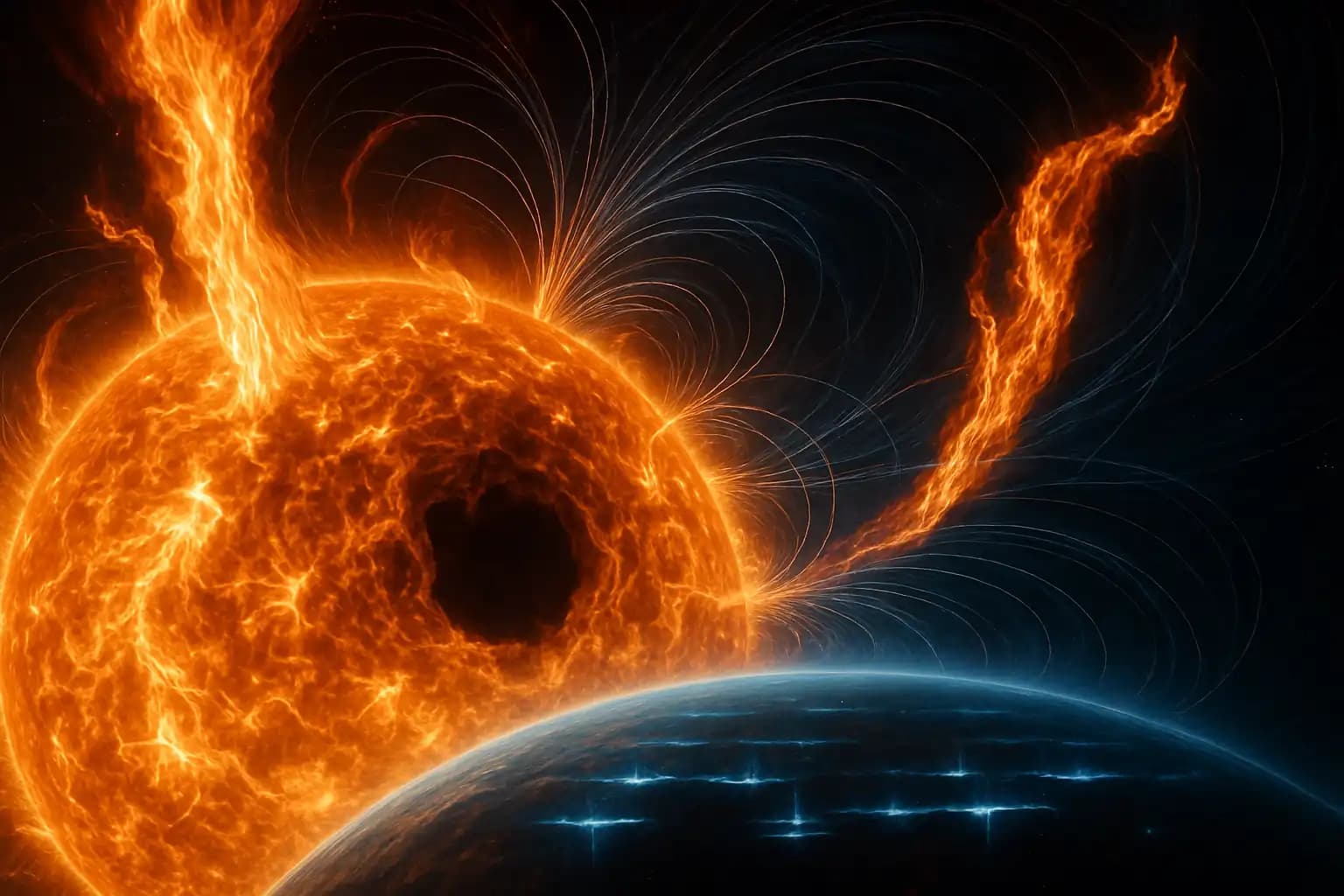As we anticipated solar fireworks at the peak of Solar Cycle 25, the Sun has unexpectedly slammed on the brakes. In May 2024, sunspot numbers have plummeted, even as massive plasma filaments—some of the largest in recent years—erupt from the solar surface. A notorious coronal hole aligns once again with Earth’s delicate magnetic bubble. Add in a cluster of unusual Schumann resonance anomalies down on Earth, and the space weather headlines resemble a “prepper’s almanac” more than a typical science report.
Geophysicist Stefan Burns, who reports at the intersection of solar physics and Earth’s electromagnetic behavior, warns that this “cooling off” of Solar Maximum isn’t a calm sunset. Instead, we see a curious rise in geoeffective solar features and electromagnetic disturbances—phenomena reflected in investigative articles like this report on global weirdness. In summary: the Sun remains unpredictably volatile, and Earth’s atmosphere is responding accordingly.
Plummeting Sunspots and Powerful Plasma Filament Eruptions
The sudden drop in sunspot numbers in May signals a notable shift in solar dynamics. Solar maximum typically means rising sunspot counts, but recent data indicates a rapid decline. During this lull, colossal plasma filaments—massive ribbons of electrified gas stretching hundreds of thousands of kilometers—have erupted from the Sun’s surface. Space weather trackers at EarthSky highlighted the most spectacular events.
Why this contradiction? Some physicists believe “magnetic reconfiguration” is involved—an innate solar process where energy accumulates and releases explosively, even with falling sunspot counts. The results for Earth can be severe: geomagnetic storms, auroras in unexpected latitudes, and rare disruptions to power and communications infrastructure. This dynamic mirrors patterns identified in dark-sky features such as unexpected subterranean threats and the surprising fragility of civilization’s electrical grid, as discussed in doomsday analyses at this grim what-if.
Coronal Holes and the Ninth Drifting Dragon: Impacts on Space Weather
A massive coronal hole has rotated into a geoeffective position—marking a record ninth pass facing Earth. Coronal holes are gaps in the Sun’s magnetic field where charged particles flow freely into space, impacting Earth’s magnetosphere and potentially sparking geomagnetic storms. Space weather prediction centers like those at NOAA (NOAA SWPC) warn that this recurring feature poses sustained space weather threats throughout the month.
It’s not merely about beautiful auroras. A strong hit from a coronal hole’s high-speed stream can induce currents in long conductors on Earth, disrupt satellite orientation, and cause limited power grid fluctuations, as reported by The Watchers. When combined with declining sunspot activity, these events create complex forecasting challenges, a theme examined in analyses of multi-factor global risks like terrestrial groans and magnetic chaos.
Schumann Resonance Anomalies: Earth’s Pulse Goes Awry
Amid the upheaval of plasma ejections and electromagnetic disturbances, Earth’s own heartbeat—the Schumann resonance—has begun to behave oddly. These global electromagnetic resonances, essentially standing waves in the atmosphere triggered by lightning and solar weather, have exhibited unusual fluctuations. Some observers link these anomalies to intense geomagnetic activity, while others speculate ominously about significant shifts on a deep Earth or solar system scale. The science behind such resonances and their broader implications can be explored in Wikipedia’s Schumann resonance entry.
Whatever the cause, it’s evident that the interaction between solar and terrestrial signals can generate ripple effects far beyond auroras or radio static. Earth’s electromagnetic environment, always delicately balanced, is particularly sensitive to the kind of unsettling solar weirdness now reported across independent science bulletins and in overviews of systemic crisis.
Solar Cycles and the Future: Where Is This Headed?
Despite our advancements in astrophysics, the solar cycle remains as unpredictable as ever. The periodic rise and fall of sunspots—mapped every 11 years in what’s known as the solar cycle (learn more on Wikipedia)—governs not just surface storms but possibly deeper, poorly understood astrophysical and geomagnetic interactions. This month’s pattern-breaker, where active solar activity occurred despite dropping sunspot numbers, has scientists contemplating what lies ahead. The stakes are significant. Space weather not only affects satellites or captivates skywatchers; it impacts everything from climate to global infrastructure stability, as discussed in doomsday scenario features on Unexplained.co.
Thus, while the Sun’s recent behaviors may enliven our weather apps, they extend beyond an astronomer’s headache—they serve as a gauge of civilization’s technological resilience. This reminds us that when the cosmos throws a curveball, Earth must be prepared to respond (or duck and cover).




